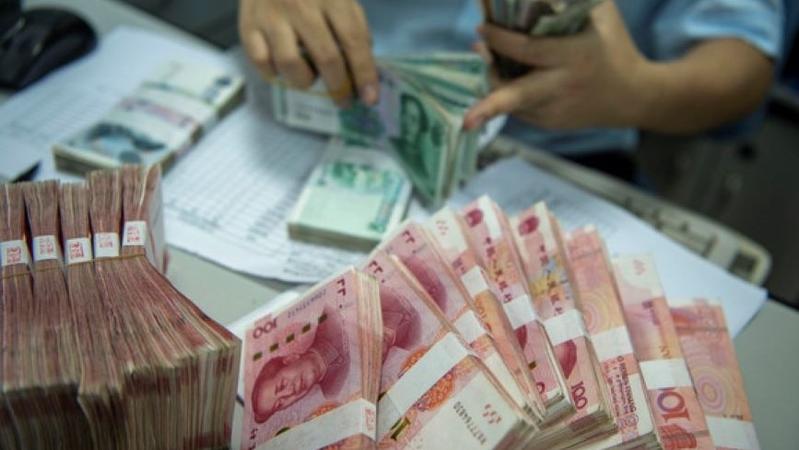Stress unlikely to derail recovery, countering Moody's 'negative' outlook
 A cashier counts RMB notes in a bank in Haian, Jiangsu province. (PHOTO / SIPA)
A cashier counts RMB notes in a bank in Haian, Jiangsu province. (PHOTO / SIPA)
China is expected to completely defuse hidden local government debt risks in around four to five years, and the debt stress is unlikely to trigger systematic financial risks that would derail China's economic recovery, a source close to the matter told China Daily.
The anonymous source made the remarks when rebutting the recent downgrading by rating agency Moody's to its outlook on China's government credit ratings from "stable" to "negative".
The source said that China's on-balance-sheet government debt-to-GDP ratio is only about 50 percent, far less than many other major economies, and the hidden local government debt is much less than many estimate. Besides, half of the local government hidden debt will be properly addressed by the end of the year, with strengthened regulations forestalling any new debt from emerging.
"The country is capable of properly handling existing debt with the road map it has employed," the source said, adding that some regions such as Guangdong province and Shanghai have already finished defusing the risks from implicit local government debt.
The country has adopted a package of measures to solve the hidden debt risk, which include extending debt maturities, selling assets to repay debts, and replacing short-term and costly local government financial vehicle debts with local government refinancing bonds that have longer-term maturities and lower costs.
"Local governments raising funds through so-called local government financial vehicles will become history, leaving the platforms involved to follow market-oriented rules to survive or not," the source said.
Following Moody's move, rival agencies S&P Global Ratings and Fitch Ratings both confirmed with China Daily that they have made no changes to their ratings on China. S&P Global Ratings affirmed A+long-term ratings on China in June with a stable outlook, while Fitch Ratings affirmed China at A+ with a stable outlook in August.
Beijing-based rating agency China Chengxin International Credit Rating also affirmed on Tuesday its sovereign credit rating of AA+g, with a stable outlook on China.
The agency said China's economy has shown strong resilience in 2023, with sufficient fiscal space.
The plan to issue additional government bonds of 1 trillion yuan ($140 billion), announced in October, is conducive to increasing local governments' fiscal space, and will add momentum to investment and economic growth, it said.
Song Liyi, a researcher at the Chinese Academy of Macroeconomic Research's Economic Research Institute, said Moody's cut was flawed, reflecting its misjudgment of China's economic prospects.
China's debt-to-GDP ratio is lower than most other countries in the world, while the nation has managed to keep fiscal deficit rates at a low level for years, with broader external financial strengths from high foreign exchange reserves, Song said.
The anonymous source said the authorities have decided only to pay special attention to local government financial vehicle debts that were raised to support local economic development and now have repayment problems.
The implicit debt to be addressed does not include the debts of local government financial vehicles with a healthy cash flow, because their debts are unlikely to default. The debt in this regard does not include local government financial vehicle debts irrelevant to local governments' aspirations for economic growth, either. Those LGFVs involved will follow market rules to try to survive.
"It is important to note that even with the recent economic challenges, our growth outlook for China remains quite strong," said Jeremy Zook, director of Asia-Pacific Sovereign Ratings at Fitch Ratings at a conference in Shanghai late last month.
"It appears increasingly likely that the GDP growth (of China) in 2023 will exceed the 4.8 percent forecast from our September Global Economic Outlook and could be just above 5 percent, after third-quarter GDP outperformed our expectations," Zook said. "The current rating does account for a large share of contingent liability risks."
Ouyang Shijia contributed to this story.


